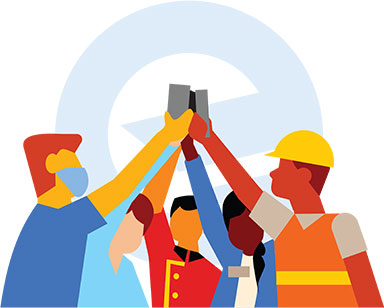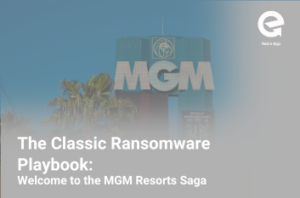As experts on internal communication, we talk a lot about best practices for reaching your workforce. Especially reaching teams of 1,000, 10,000, or 100,000 employees across multiple locations over at Non-Desk Matters.
However, I wanted to lift up the curtain and dive into some real-world stories of how our own team collaborates. More specifically, how we share, disseminate, and cull information outside of dedicated meetings and working blocks.
Not only does this lead to great intellectual discussions (and very, very non-intellectual discussions depending on the content) but it also helps build and breed our open culture.
There’s too much stuff on the internet
Many of my colleagues love to read blogs, listen to podcasts, catch up on industry news, or newsworthy items during their morning coffee or lunch break. We created a group chat channel called “Reading List” where we can share interesting articles with everyone.
After quickly realizing how noisy this could get, we established one easy ground rule:
If you post a link it must be accompanied by a title and description.
The description can be copied directly from the post or it could include your own two cents on the article. The benefits of this rule are:
- It makes you actually stop and think about posting, to prevent spamming the channel with hundreds of links.
- It increases the chance other people will actually read it with more context to pique interest.
This has been a great way to share information and learn more about each other’s interests and passions.
No time to scour the internet? Find your Scoble
Robert Scoble visited Red e App last summer and we observed first hand how much he feeds his head with information. Zapier’s Danny Schreiber summarizes an SXSW talk on productivity by Scott Hanselman and the greatest takeaway is to “Find your Scoble”:
I used to have 1,000 blogs that I would read. And then who’s the greatest blog reader in the world? It’s Robert Scoble, he’s always talking about how many blogs that he reads. So I finally decided, ‘I’m not Robert Scoble.’ He’s a freak, and it’s not healthy to keep up on that many blogs. So you know what I do? I read his blog. So I took the thousand blogs that I read and I pick five link blogs. I found my Scobles. And I read those five blogs and they give me an aggregated news. It’s like why we listen to the BBC news on the hour, because it tells us what’s going on so I don’t have to watch all the other news. Find your aggregator inside of the company.
Ask yourself: Who are the people who can tell me what’s going on and keep me up to date? Those people are your trusted aggregators, your Scoble’s.
Break down the silos. Encourage cross-departmental collaboration
Let me recap a Red e App scenario from last year.
A customer support manager is reviewing a specific feature of the product in advance of walking through it with a user. She comes across something and is uncertain of the details of how the feature works depending on certain situations. She emails the success manager, who also isn’t sure.
They send a message to the product manager, who, yup you guessed it, also doesn’t know. The product manager goes and bothers a developer who doesn’t know but interrupts his own time and traces through the code to figure it out. We have the answer now, and it is passed all the way back down the chain so everyone is up to speed.
Besides the obvious inefficiencies of what transpired, the biggest thing we learned here is this:
If you’re taking a lot of time to discuss a feature internally because it’s complicated or not clearly understood, then you can bet that your customers definitely don’t understand it.
This led us to undertake a cross-functional effort to update our documentation and training (both internally and externally). Additionally, we took a step back and reviewed the overall workflow of the feature to see where we could improve and simplify.
This resulted in a much better user experience. Now we have better, open lines of communications between departments to ensure constructive feedback is given at specific points of our product life cycle.
In summary, talk to each other, go to lunch, take a walk. A lot of great things happen outside of scheduled meetings.


